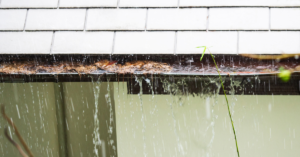Rainwater is a precious resource in a country with a climate like Australia’s. And storing it safely is a must. Regular rainwater tank cleaning is an important task to keep your family safe and ensure your tank and plumbing systems stay in good condition.
But what dangers lurk in an unclean tank, and what harm can they cause?
Here are a few of the most common kinds of bacteria that can grow in a dirty tank.
Escherichia coli (E. coli)
E. coli are the most common type of bacteria that grow in dirty water. They are a sign of faecal contamination and can cause diarrhoea, stomach cramps, and even fever.
Salmonella
About 2,500 strains of Salmonella exist and can infect the body by consumption of contaminated water or food. Symptoms of an infection include fever, diarrhoea, headache, abdominal pain, nausea, or vomiting.
Animal or bird droppings are most likely to infect the rainwater that enters your tank and cause the growth of salmonella.
Legionella
Legionella includes some of the more harmful types of bacteria. These can cause a type of lung infection called Legionnaires’ disease, Pontiac fever, and more.
They are common in water high in mineral or organic content and grow in sludge and slime.
Giardia
Like salmonella, giardia also enters the water from animal droppings. It causes diarrhoea, gas, vomiting, nausea, pain, foul-smelling stools, dehydration, and more.
Campylobacter
Campylobacter is more harmful to young children, the elderly, and immunosuppressed individuals. Campylobacter is typically found in untreated water contaminated with animal faeces.
How Often Should Tanks Be Cleaned?
Water tanks should be inspected and serviced every 6 months. They should also be inspected for sediments and undergo desludging once every 2 to 3 years.
Along with the tanks, you must also get your gutters, catchments, and downpipes cleaned regularly. This not only affects the cleanliness of your tank water but also ensures maximum water gets into the tank.
We recommend you use a professional service team that can provide complete cleaning and inspection. Cleaning the tank and other water catchment systems by yourself can put your health at risk and might not eliminate the risk of contamination.
A professional can also give you tips to keep your tank in optimum condition between cleaning sessions.
Clean Your Tank Today!
Gutter-Vac’s quick and advanced tank cleaning solutions can help you reduce downtime during a tank cleaning!
We use a specialized vacuum system, so we can clean your tank even when it’s filled with water. This method saves your time while also ensuring little water is wasted. It is also safe as the professional doesn’t have to enter the tank.
Plus, you do not have to wait until the summer or rains to clean the tank; you can get it done anytime!
You can also choose to remove the water before getting your tanks’ walls and floors vacuumed, as that’s what we recommend.
Get in touch to request a quote or book a tank cleaning appointment.










